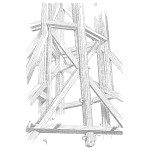
Guest Post by Michael Keer, Founder & Managing Partner, Product Realization Group
The World Economic Forum has conducted a Global Risk Survey since 2006. This is the fifteenth survey. The responses are from 650 members of the World Economic Forum. In the preface to the 2021 Global Risk Report it is noted that: “In 2006, the Global Risks Report sounded the alarm on pandemics and other health-related risks.” (1) With this context in mind, the 2021 risk analysis “centers on the risks and consequences of widening inequalities and societal fragmentation. In some cases, disparities in health outcomes, technology, or workforce opportunities are the direct result of the dynamics the pandemic created.” (2)
This piece will review the results of the 2021 Global Risk Survey. It will also discuss some of the issues surrounding the survey.
[Read more…]














 Ask a question or send along a comment.
Please login to view and use the contact form.
Ask a question or send along a comment.
Please login to view and use the contact form.